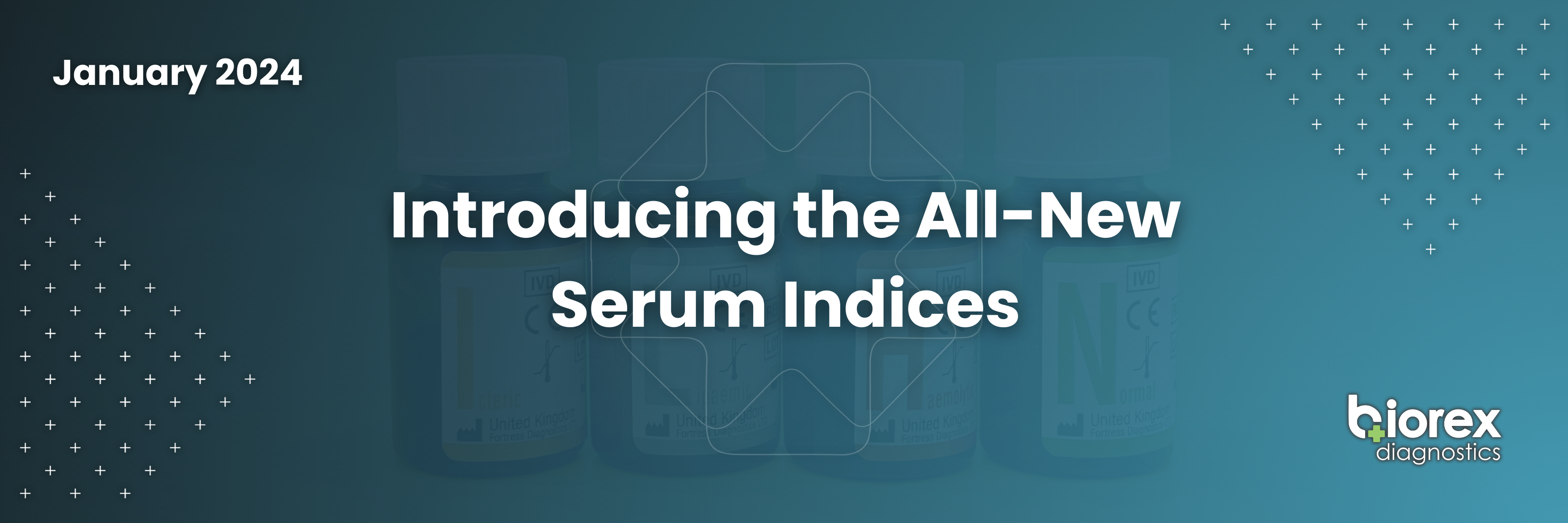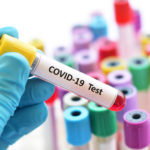
Serum Indices Product Launch
Serum Indices Product Launch
Introducing the all-new Serum Indices! The Biorex Serum Indices are the perfect tools to aid in the monitoring of instrument detection of lipaemia, icterus and haemolysis in specimens.
Introduction
Analytical interference denotes any factor that impacts the accuracy, precision, or dependability of laboratory results, causing deviation from the true value of the substance being analyzed due to the presence of endogenous or exogenous substances. It is crucial to study the influence of endogenous substances like bilirubin, haemoglobin, and lipids on clinical laboratory tests to ensure the precision and dependability of test outcomes. Among the most common analytical interferences observed in clinical laboratories are those caused by haemolysis, icterus, and lipaemia, which can affect the results of chemistry assays 1.
Automated chemistry analyzers often incorporate features to detect specific interferences, such as haemolysis, icterus, and lipaemia, in samples. These analyzers can identify samples exhibiting elevated levels of these substances, alerting laboratory staff to potential interferences and allowing them to take appropriate measures. However, if an automated chemistry analyzer is unavailable, what other alternatives exist?
Introducing the All-New Biorex Serum Indices
Features & Benefits
- Enhancing specimen integrity
- Prepared from human source material
- Available in lyophilised and liquid frozen formats
- Compatible with a wide range of leading chemistry instruments
- Improves the identification of pre-analytics interferences
- Long shelf life to reduce frequency of lot change
- Monitors instrument response to detecting lipaemic, icteric or haemolysed samples
Stability
| When stored at -20 to -80oC | 24 months |
| Frozen aliquot at -20 to -80oC | 30 days |
| Open vial stability at +2 to +8oC | 14 days |
| Unopen vial stability at +2 to +8oC | 14 days |
Ordering Details
| Cat. Number | Levels | Pack Size |
| BXC0600A | LIHN | 4 x 1 x 5ml |
| BXC0600C | LIH Lipaemic | 4 x 5ml |
| BXC0600D | LIH Icteric | 4 x 5ml |
| BXC0600E | LIH Haemolytic | 4 x 5ml |
| BXC0600B | LIH Normal | 4 x 5ml |
Product Information
Interference stemming from lipaemia, icterus, and haemolysis (LIH), which can compromise sample integrity, stands as one of the most prevalent issues observed across all clinical laboratories.
Accurately assessing LIH interference levels within specimens directly correlates with obtaining precise results and ensuring appropriate patient care.
Traditionally, laboratories conducted manual detection of serum indices by visually inspecting samples. However, most automated analytical platforms now possess the capability to precisely measure LIH using photometric methods, offering qualitative or semi-qualitative results. This not only ensures consistency but also eliminates subjective variations.
Biorex Serum Indices Quality Controls are specifically designed to monitor an instrument’s accuracy in measuring LIH within specimens. This is accomplished by employing controls that replicate specimens considered as either lipamic, icteric, haemolytic, or normal, using human-based control materials.
Clinical laboratories may encounter samples exhibiting significant levels of lipaemia, icterus, and haemolysis, all of which, if sufficiently high, can interfere with clinical assays. Several diseases, dietary factors, and pre-analytical conditions can elevate concentrations of chromogens like bilirubin, haemoglobin, and lipids in serum/plasma. The use of serum indices allows a laboratory to critically evaluate the LIH interference level of a sample and to make a decision as to whether or not a result has been potentially compromised resulting in an incorrect result being reported.
The laboratory’s quality of reporting can be kept to a high standard by treating LIH indices as another quantitative assay which require quality control to ensure reproducibility and reliability.
References
- Akbas N, Eppert B, Miller J, Schulten C, Wallace C, et al. Effect of Hemolysis, Icterus and Lipemia on Chemistry Tests and Association between the Amount of Interfering Substances and LIH Indices . chrome-extension://efaidnbmnnnibpcajpcglclefindmkaj/https://www.medpace.com/wp-content/uploads/2018/08/Whitepaper-LIH.pdf (accessed 13 December 2023).







